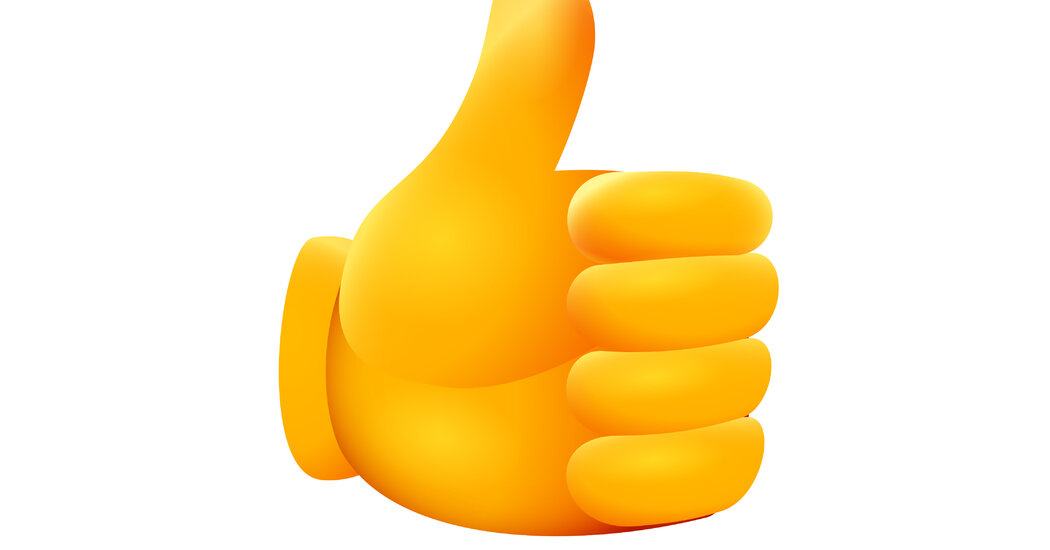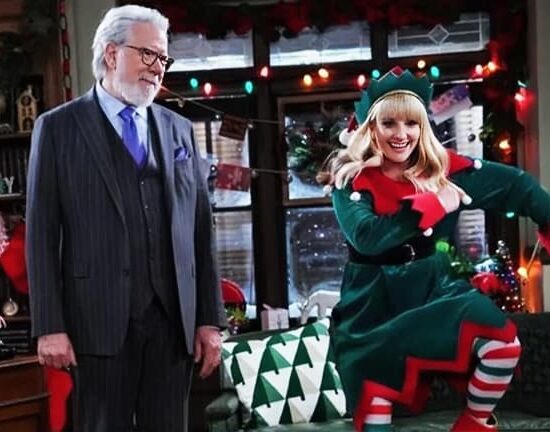
Be careful before you casually dash off another thumbs-up emoji: A Canadian court has found that the ubiquitous symbol can affirm that a person is officially entering into a contract.
The ruling pointed to what a judge called the “new reality in Canadian society” that courts would have to confront as more people express themselves with hearts, smiley faces and fire emojis — even in serious business dealings or personal disputes.
The case questioned whether a farmer in Saskatchewan had agreed to sell 87 metric tons of flax to a grain buyer in 2021. The buyer had signed the contract and texted a photo of it to the farmer, who had responded by texting back a “thumbs-up” emoji.
The farmer, Chris Achter, contended that the “thumbs-up emoji simply confirmed that I received the flax contract” and that it was not confirmation that he had agreed to the terms of the deal, according to the ruling. He said he had understood the text to mean that the “complete contract would follow by fax or email for me to review and sign.”
The grain buyer, Kent Mickleborough, pointed out that when he had texted the photo of the contract to Mr. Achter’s cellphone, he had written, “Please confirm flax contract.” So when Mr. Achter replied with a thumbs-up emoji, Mr. Mickleborough said he had understood that Mr. Achter “was agreeing to the contract” and that it had been “his way” of signaling that agreement.
The judge noted that Mr. Achter and Mr. Mickleborough had had a longstanding business relationship and that, in the past, when Mr. Mr. Mickleborough had texted Mr. Achter contracts for durum wheat, Mr. Achter had responded by succinctly texting “looks good,” “ok” or “yup.”
Both parties clearly understood these terse responses were meant to be confirmation of the contract and “not a mere acknowledgment of the receipt of the contract” by Mr. Achter, wrote Justice T.J. Keene of the Court of King’s Bench for Saskatchewan. And each time, Mr. Achter had delivered the grain as contracted and had been paid.
As such, Justice Keene ruled last month that there had been a valid contract between the parties and that Mr. Achter had breached it by failing to deliver the flax. The judge ordered Mr. Achter to pay damages of 82,200 Canadian dollars, or about $61,000.
“This court readily acknowledges that a ? emoji is a nontraditional means to ‘sign’ a document but nevertheless under these circumstances this was a valid way to convey the two purposes of a ‘signature’ — to identify the signator” as Mr. Achter because he was texting from his cellphone number and “to convey Achter’s acceptance of the flax contract,” Justice Keene wrote.
In coming to his decision, Justice Keene cited the dictionary.com definition of the thumbs-up emoji: “used to express assent, approval or encouragement in digital communications, especially in Western cultures.”
“I am not sure how authoritative that is but this seems to comport with my understanding from my everyday use — even as a late comer to the world of technology,” Justice Keene wrote.
In an interview on Thursday, Mr. Achter said he “obviously” disagreed with the decision and declined to comment further. His lawyer, Jean-Pierre Jordaan, did not immediately respond to an emailed request for comment.
According to the ruling, Mr. Jordaan had warned that allowing a thumbs-up emoji to signify agreement to a contract would “open up the flood gates” to all sorts of cases asking courts to define the meaning of other emojis, such as a handshake or a fist.
Josh Morrison, a partner at the law firm that represented Mr. Mickleborough, declined to comment on the decision, but told Canadian Lawyer magazine that it was a “really interesting case — a classic law school question.”
Laura E. Little, a professor at Temple University Beasley School of Law, called the decision “a remarkable sign of the new world of communication when an emoji can work to snap the trap of creating a contract.”
Julian Nyarko, an associate professor at Stanford Law School, said the legal test for agreement to a contract centers on how a reasonable person would interpret the signs that both parties gave. In some cases, a verbal agreement is sufficient, he said.
“For most intents and purposes, a reasonable person, if they see a thumbs-up emoji, would think that the person who is giving the thumbs-up wants the contract,” Professor Nyarko said. “It fits quite neatly into the legal doctrine that the courts have established.”
Even so, the precise meanings of emojis will remain an open question in the United States and Canada, depending on the facts of each case, said Eric Goldman, a law professor and co-director of the High Tech Law Institute at Santa Clara University School of Law.
Professor Goldman, who has tallied 45 court opinions in the United States that have referenced the thumbs-up emoji, noted that some young people use the emoji sarcastically or disingenuously. Others use it merely to acknowledge receipt of a message like a verbal “uh-huh.” In some Middle Eastern countries, he said, the gesture is offensive.
“This case won’t definitively resolve what a thumbs-up emoji means,” Professor Goldman said, “but it does remind people that using the thumbs-up emoji can have serious legal consequences.”













